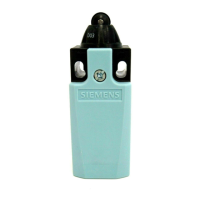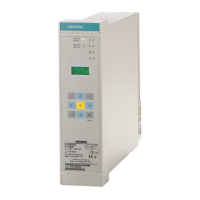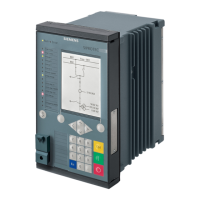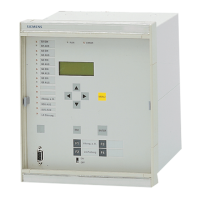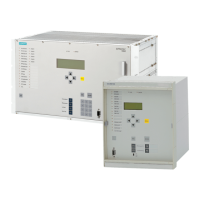23
Note: The dc test voltage is given as a
reference only. It represents values believed
to be appropriate and approximately
equivalent to the corresponding power-
frequency withstand test values specified
for each voltage rating. The presence of this
column in no way implies any requirement
for a dc withstand test on ac equipment or
that a dc withstand test represents an
acceptable alternative to ac withstand tests.
When performing dc tests, the voltage
should be raised to the test value in discrete
steps and held for a period of one minute.
Note: Do not use dc high-potential testers
incorporating half-wave rectification.
Such devices produce high peak voltages.
These high voltages will produce X-ray
radiation. Such devices also show erroneous
readings of leakage current when testing
vacuum circuit breakers.
Field dielectric tests are recommended
when new units are installed, or after
major field modifications. The
equipment should be put in good
condition prior to the field test. It is not
expected that equipment shall be
subjected to these tests after it has been
stored for long periods of time or has
accumulated a large amount of dust,
moisture or other contaminants without
being first restored to good condition.
A dielectric test on secondary and
control circuits should be made for one
minute at 1,125 volts ac or 1,590 volts
dc. The above voltages are in accordance
with NEMA Standards.
Note: Certain control devices, such as
motors and motor circuits, should be tested
at 675 volts ac. Electronic devices should be
tested at the voltages specified in the
instruction manual for the electronic device.
3. Charge the closing springs manually and
push the close pushbutton to close the
circuit breaker.
4. Verify main contact status indicator
shows CLOSED. Press the trip
pushbutton and verify the main contact
status indicator shows OPEN. The spring
condition indicator should also show
DISCHARGED.
5. Energize the control circuits. The motor
should run to charge the closing springs,
and then automatically turn off.
6. Close the circuit breaker electrically
(locally and remotely as applicable) and
verify the circuit breaker shows CLOSE
and remains closed by checking the
main contact status indicator. Note that
the motor will immediately run to
recharge the closing springs.
7. Trip the circuit breaker electrically
(locally and remotely as applicable).
8. Trip the circuit breaker by passing
sufficient current (or voltage if
applicable) through the coils of
protective relays.
9. Repeat the close and trip operations
several times to assure proper operation.
10. Check the tripping and closing times
from coil energization to contact part or
contact make.
Rated maximum voltage
Rated power-frequency
withstand
Field-test voltage
kV (rms) kV (rms) kV (rms) kV dc
15.5 50 37.5 53
27.6 60 45 64
38.0 80 60 85
Table 2: High-potential test voltages
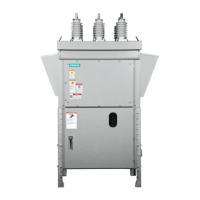
